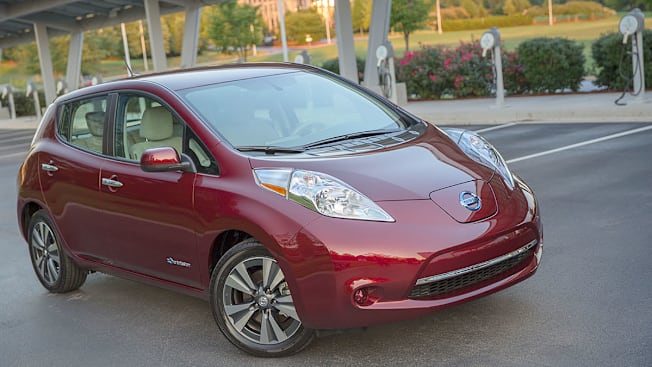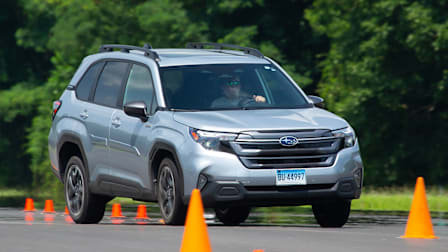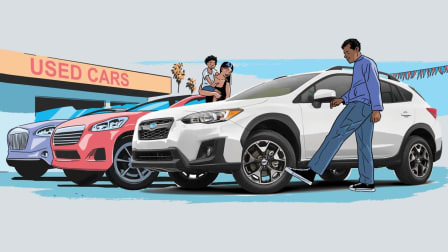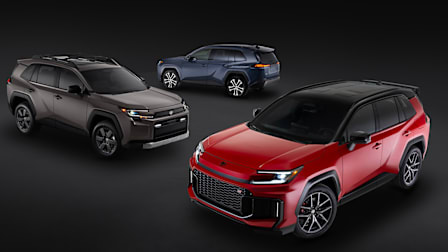What You Should Know Before You Buy a Used Electric Vehicle
They may be less expensive than gas or hybrid cars, but how long will the battery last? CR's experts answer your questions.
Used electric vehicles are some of the most budget-friendly used cars on the market these days. That’s largely because of slowing demand and relatively high depreciation. But is it a smart idea to buy one?
The good news is that reliable, cost-conscious used EVs exist. Because of depreciation, you may be able to get a newer electric vehicle with more features than if you purchased a comparable gas-powered vehicle for the same price. In addition, most EV batteries last a long time and are covered by long and comprehensive warranties. Even though recent legislation eliminated a $4,000 federal tax credit, there’s still savings to be found.
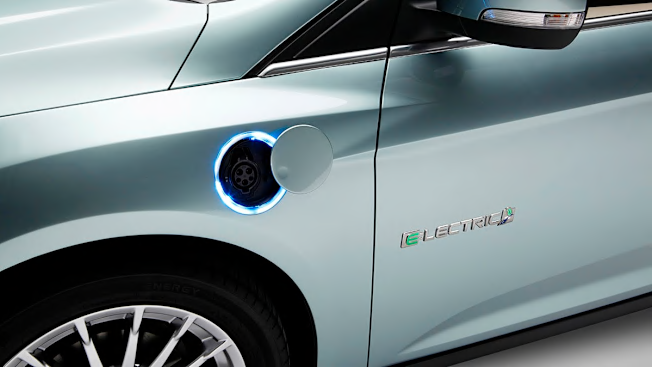
Ford Ford
How Long Will the Battery Last?
The batteries that power electric cars are designed to last a long time, a lot longer than the starter batteries on gas-powered vehicles, for example. But they don’t last forever, and they’re quite expensive to replace. In our 2023 reliability survey, 17 percent of 2013 Tesla Model S owners told us their cars needed battery pack replacements at a cost of $15,000 each.
“The reality is that if you end up having to replace the battery in an EV, the cost could be more than the car’s worth,” Knizek says.
This is in line with data from Recurrent, a firm that analyzes and measures EV battery performance, which found that 13 percent of EVs older than 2015 needed battery replacements. By comparison, only 1 percent of EVs newer than 2016 needed new batteries.
It’s important to note that nearly all older EVs were made by either Tesla or Nissan, so reliability data says as much about those manufacturers and their battery suppliers as it does about that era of EV technology overall. The Nissan Leaf, in particular, used a different cooling method for its battery than newer electric vehicles, which may explain some concerns about its battery life that might not apply to other EVs. Time will tell whether newer EVs require battery replacements at the same rate as their forebears.
What Is the Warranty on EV Batteries?
Despite those concerns, buyers of newer used EVs shouldn’t have to worry about paying for a battery replacement. Nearly all EVs have a battery warranty that lasts 8 years or 100,000 miles, and also covers battery-related components such as the battery control module. A few EVs—including some Tesla models—have longer warranties. Battery coverage is separate from bumper-to-bumper or powertrain warranties, which may expire more quickly. Battery warranties are also transferable to new owners.
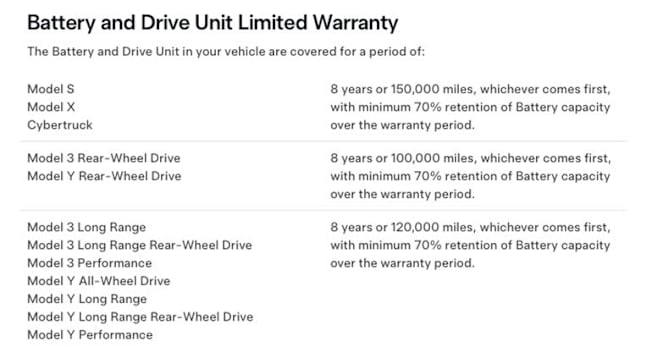
Photo: Tesla Photo: Tesla
Battery warranties will often spell out their terms and conditions in a vehicle owner’s manual, which can be found online. For example, Ford says it will repair or replace a battery that appears to be losing range under warranty if it has less than 70 percent of its original capacity, as determined by tests run by the dealership. But the automaker says that it may deny warranty coverage if owners fail to install software updates in a timely fashion.
In practice, this means that you probably won’t have to pay for an expensive battery repair as long as your used EV is under warranty.
Are Used EVs Reliable?
CR’s exclusive owner survey data shows that most older EVs have below-average reliability and that even newer EVs lag behind gas-powered cars and hybrids. Our members report problems with electric drive motors, charging, and batteries. This is largely because it often takes a few years to work out bugs in new technology, and also because many EVs are luxury, tech-laden cars with more features that can go wrong, Knizek says. “Compared to gas-powered cars, electric vehicle technology is in its infancy and changing rapidly with each new model that’s introduced,” he says. That’s one reason we think shoppers interested in a new EV should also consider leasing instead of buying.
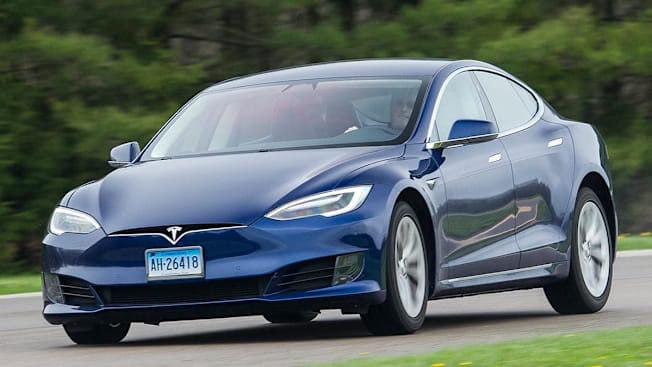
Photo: John Powers/Consumer Reports Photo: John Powers/Consumer Reports
The good news is that EVs require less scheduled maintenance than cars with gas engines. There are no spark plugs to replace or engine oil to change, so as long as your used EV remains under a factory warranty—or if you purchase a certified pre-owned car with an extended factory warranty—you could save money on operating costs compared with a gas-powered car.
“In general, if you plan to buy an EV, it would be wise to buy one that is still under warranty. Time will tell how newer EV technology ages and whether or not they would succumb to the same battery degradation issues,” says Steven Elek, who leads the auto data analytics program at CR. “And as always, each model has a reliability story of its own.”
You’ll also want to check to make sure any EV you’re interested in purchasing has the latest software and doesn’t have any open recalls. With Teslas, one can press the “T” logo on top of the screen and the latest software update will appear, along with notes explaining what’s changed.
How Fast Do Used EVs Charge?
If you plan to charge while on the road, you should know that some older EVs charge a lot more slowly than others. The majority of older EVs have a maximum charging acceptance rate of 50 kW, which means they won’t be able to benefit from fast chargers capable of 100 kW, 150 kW, or even 350 kW.
Most newer EVs charge at much faster speeds and they tend to be more efficient, which means more miles of range added per time spent charging. The 2022 Hyundai Ioniq 5, for example, has a maximum acceptance rate of 240 kW and can add up to 11.6 miles of range per minute of charging at a 350 kW DC fast charger. Compare that with a 2017 Chevy Bolt, which can add only about 2.9 miles of range per minute due to its 50 kW acceptance rate. Similarly, when plugged into a Supercharger, a 2013 Tesla Model S can add 4 miles of range per minute, a 2018 Model S can add 6.1 miles per minute, and a 2022 Model S can add 14.8 miles per minute.
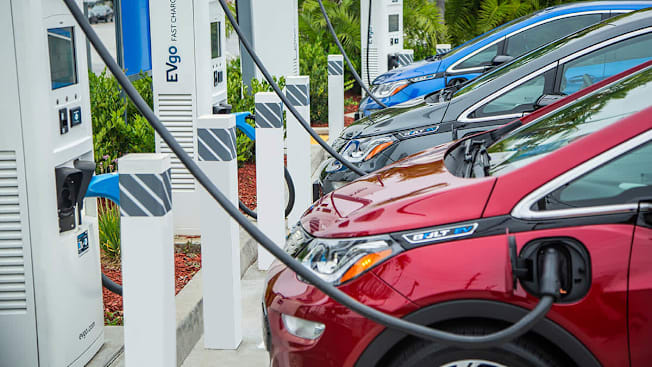
Consumer Reports Consumer Reports
The Nissan Leaf, Kia Soul EV, and Mitsubishi i-MiEV have CHAdeMO charging ports instead of more common CCS and NACS ports, which means they’re not compatible with the majority of charging stations in the U.S. and Canada. Even as manufacturers begin to offer converters so non-Tesla EV owners can plug in at Tesla Superchargers, some older EVs may be left out.
Slower charging speeds can also be a problem for home charging. Some 2017 and earlier Nissan Leaf models only have a 3.3kW onboard charger, which means they can take more than twice as long as other EVs to charge fully on a typical 32-amp home charger. It took us about 8 hours to charge a first-generation Leaf from empty on a home charger, and that only gave us 73 miles of range when it was new. The charging display on the vehicle’s touchscreen will show if the Leaf you’re considering is equipped with a 3.3kW or a faster 6.6kW charger.
You should also keep in mind that installing a charger can be pricey and that public charging is often a lot more expensive than charging at home. If you can’t install a charger where you live, you may end up spending as much on electricity as you would have paid for gas.
How Do You Check a Used EV's Battery Health?
All EV batteries tend to lose some range over time. That’s not a big deal for longer-range vehicles, but it could really curtail the usefulness of some older EVs with short ranges, such as the Ford Focus Electric (shown above, 76 miles), Mitsubishi i-MiEV (62 miles), 2014-2018 Mercedes B Class (85 miles), and 2011-2014 Nissan Leaf (between 73 and 84 miles). It’s also important to keep an eye on battery health if you’re purchasing a vehicle that’s close to the end of its battery warranty.
The simplest way is to fully charge an EV’s battery and compare the estimated range readout on the dashboard to the original EPA estimate. Before you schedule a test drive, ask the dealership or seller for a photo of the dashboard showing the car’s range estimate after it’s been plugged in overnight. They may have to go into the vehicle’s settings and manually increase the maximum charge capacity to 100 percent first. When you drive, make sure the range estimate and battery state-of-charge percentage indicators don’t drop significantly.
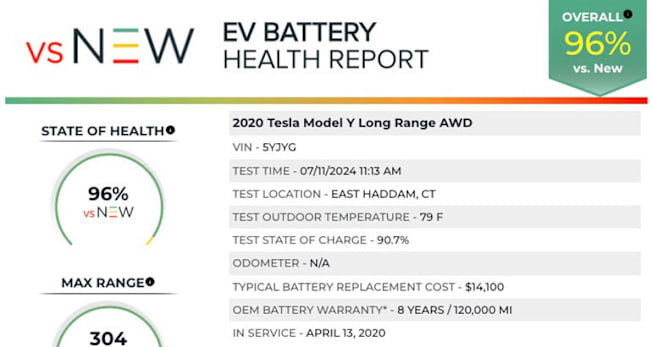
Photo: vsNew Photo: vsNew
The problem with this method is that many factors affect real-world EV range. On a cold day, your range estimate could drop by 25 percent. The same is true for using accessories such as a heater or driving on the highway.
Some vehicles, such as the Nissan Leaf, have built-in battery health meters. Tesla vehicles have a built-in battery test function, but it takes up to 24 hours to complete and requires following specific instructions.
Services such as Recurrent use real-world vehicle data to predict a vehicle’s expected range and how it will change in three years. Recurrent collects data directly from about 25,000 EVs and uses it—including odometer readings, battery configuration, dashboard range estimates, location, and some basic aspects of vehicle history—to predict battery health for similar vehicles, even if they haven’t had their batteries analyzed. “That allows us to generate expectations that we can share with shoppers about the vehicle today and how it will age,” says Andrew Garberson, head of growth and research for Recurrent. Many dealerships offer free Recurrent reports.
Third-party tools that plug into a vehicle’s onboard diagnostics port (known as an OBD-II) can also analyze the health of an EV battery directly. Services like vsNew allow dealerships to translate the results of these analyses into easy-to-read battery health reports that they can provide to consumers. We tested several of our own EVs using vsNew and found the results to be helpful and easy to understand. You can also get a basic battery health report from a mechanic or purchase an OBD-II scanner and software to do tests on your own.
Is There Anything Else You Should Look for When Buying a Used EV?
EVs have fewer moving parts to inspect than gas-powered vehicles, but you’ll want to check the tires. Because of their increased weight and instant torque, EVs tend to wear out tires more quickly than conventional vehicles. Bring a quarter to the dealership: If the top of George Washington’s head is just visible when placed head first in a tread groove, the tread has about 4⁄32 of an inch depth, which means it’s time to start shopping for replacements.
Some early EVs were sold in small numbers and could have little in common with newer models, which could make it more difficult to find replacement parts and knowledgeable repair technicians compared with a more mainstream model, says Michael Crossen, lead automotive technician at CR. For example, Mercedes-Benz sold about 4,000 B-Class EVs and Kia sold about 6,500 first-generation Kia Soul EVs, a fraction of the 164,000 Tesla Model 3s sold in 2019 alone.
“Low-production-number cars are always a concern for parts availability and parts pricing as they age,” Crossen says. Although dealerships should still be able to fix problems, independent shops might not have as much experience.
In addition, some older EVs relied on now-discontinued cellular networks for connectivity, and owners may not be able to schedule charging, adjust climate control, or check battery levels remotely as a result.
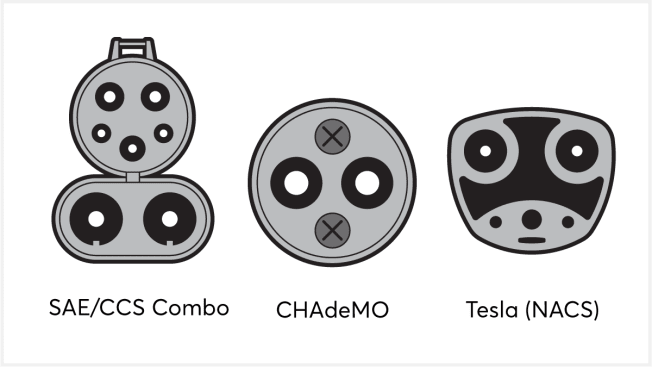
Illustration: Chris Philpot Illustration: Chris Philpot

















